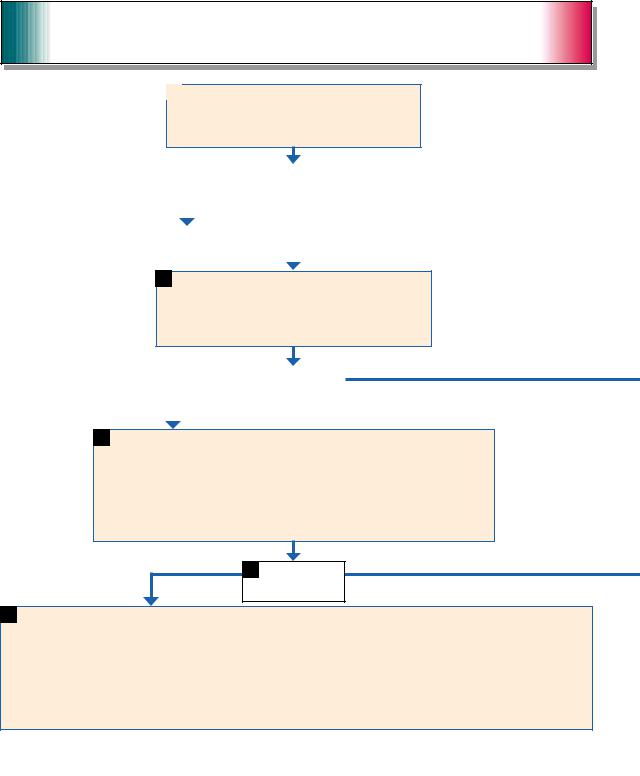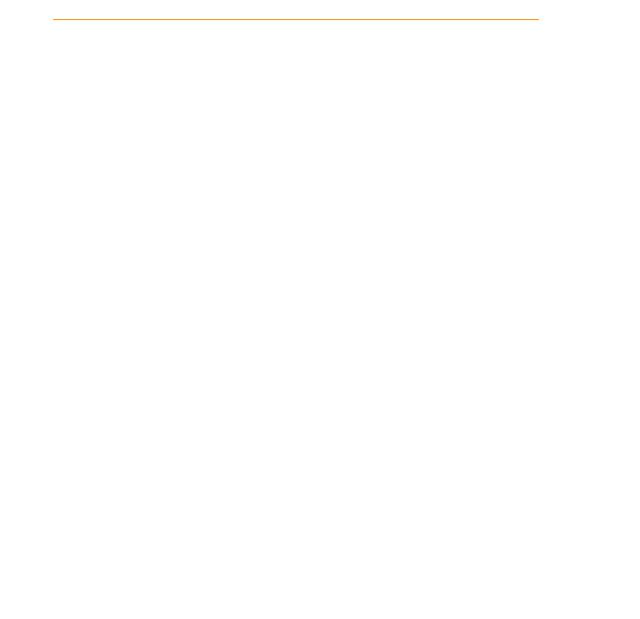
- •Contents
- •Contributors and consultants
- •Not another boring foreword
- •A look at cardiac anatomy
- •A look at cardiac physiology
- •A look at ECG recordings
- •All about leads
- •Observing the cardiac rhythm
- •Monitor problems
- •A look at an ECG complex
- •8-step method
- •Recognizing normal sinus rhythm
- •A look at sinus node arrhythmias
- •Sinus arrhythmia
- •Sinus bradycardia
- •Sinus tachycardia
- •Sinus arrest
- •Sick sinus syndrome
- •A look at atrial arrhythmias
- •Premature atrial contractions
- •Atrial tachycardia
- •Atrial flutter
- •Atrial fibrillation
- •Wandering pacemaker
- •A look at junctional arrhythmias
- •Premature junctional contraction
- •Junctional escape rhythm
- •Accelerated junctional rhythm
- •Junctional tachycardia
- •A look at ventricular arrhythmias
- •Premature ventricular contraction
- •Idioventricular rhythms
- •Ventricular tachycardia
- •Ventricular fibrillation
- •Asystole
- •A look at AV block
- •First-degree AV block
- •Type I second-degree AV block
- •Type II second-degree AV block
- •Third-degree AV block
- •A look at pacemakers
- •Working with pacemakers
- •Evaluating pacemakers
- •A look at biventricular pacemakers
- •A look at radiofrequency ablation
- •A look at ICDs
- •A look at antiarrhythmics
- •Antiarrhythmics by class
- •Teaching about antiarrhythmics
- •A look at the 12-lead ECG
- •Signal-averaged ECG
- •A look at 12-lead ECG interpretation
- •Disorders affecting a 12-lead ECG
- •Identifying types of MI
- •Appendices and index
- •Practice makes perfect
- •ACLS algorithms
- •Brushing up on interpretation skills
- •Look-alike ECG challenge
- •Quick guide to arrhythmias
- •Glossary
- •Selected references
- •Index
- •Notes

ACLS algorithms
Pulseless arrest |
1 |
Pulseless arrest |
|
•Basic life support algorithm; call for help and give CPR.
•Give oxygen when available.
•Attach monitor/defibrillator when available.
|
|
|
2 |
Check rhythm. |
|
||
|
|
Shockable |
Shockable rhythm? |
|
|||
|
|
|
|
||||
|
|
|
|
|
|
|
|
|
|
|
|
|
|
|
|
|
|
|
|
|
|
|
|
3 |
Ventricular fibrillation or ventricular tachycardia |
|
|
||||
|
|
|
|
|
|
|
|
|
|
|
|
|
|
|
|
4Give one shock.
•Manual biphasic: device specific (typically 120 to 200 joules)
•Automated external defibrillator (AED): device-specific
•Monophasic: 360 joules
Resume CPR immediately after the shock.
Give five cycles of CPR.*
|
5 |
Check rhythm. |
|
Shockable |
|
||
Shockable rhythm? |
|||
|
|||
|
|
|
|
|
|
|
|
6 Continue CPR while defibrillator is charging.
Give one shock.
•Manual biphasic: device-specific (same as first shock or higher dose)
•AED: device-specific
•Monophasic: 360 joules
Resume CPR immediately after the shock.
When I.V./I.O. available, give vasopressor during CPR (before or after the shock)
• Epinephrine I.V./I.O. Repeat every 3 to 5 minutes.
or
• May give 1 dose of vasopressin 40 units I.V./I.O. to replace first or second dose of epinephrine.
Give five cycles of CPR.*
7 |
Check rhythm. |
Shockable
Shockable rhythm?
8 Continue CPR while defibrillator is charging. Give one shock.
•Manual biphasic: device-specific (same as first shock or higher dose)
•AED: device specific
•Monophasic: 360 joules
Resume CPR immediately after the shock.
•Consider antiarrhythmics; give during CPR (before or after the shock)
–amiodarone (300 mg I.V./I.O. once, then consider additional 150 mg I.V./I.O. once)
–lidocaine (1 to 1.5 mg/kg first dose, then 0.5 to 0.75 mg/kg I.V./I.O.; maximum three doses or 3 mg/kg).
•Consider magnesium, loading dose 1 to 2 g I.V./I.O. for torsades de pointes.
•After five cycles of CPR,* go to Box 5.
304

ACLS ALGORITHMS |
305 |
|
Not shockable
9 |
Asystole or pulseless electrical activity (PEA) |
|
|
|
|
|
|
|
10 |
Resume CPR immediately for five cycles. |
|
|
|
|
|
|
||||||
|
|
|
|
|
|
|
When I.V./I.O. available, give vasopressor |
|
|
|
|
|
|
||||||
|
|
|
|
|
|
|
• epinephrine 1 mg I.V./I.O. |
|
|
|
|
|
|
||||||
|
|
|
|
|
|
|
Repeat every 3 to 5 minutes. |
|
|
|
|
|
|
||||||
|
|
|
|
|
|
|
|
|
|
|
or |
|
|
|
|
|
|
||
|
|
|
|
|
|
|
• May give 1 dose of vasopressin 40 units I.V./I.O. to replace |
|
|
|
|||||||||
|
|
|
|
|
|
|
first or second dose of epinephrine. |
|
|
|
|
|
|
||||||
|
|
|
|
|
|
|
Consider atropine 1 mg I.V./I.O. for asystole of slow PEA rate; |
|
|
During CPR |
|||||||||
|
|
|
|
|
|
|
repeat every 3 to 5 minutes (up to three doses). |
|
|
|
|
|
|||||||
|
Not shockable |
|
|
|
|
|
|
|
|
|
|
|
|
|
|
• Push hard and fast (100/ |
|||
|
|
|
|
|
|
|
|
|
|
|
|
Give five cycles of CPR.* |
|
minute). |
|||||
|
|
|
|
|
|
|
|
|
|
|
|
|
|
|
|
|
|
|
• Ensure full chest recoil. |
|
|
|
|
|
|
|
|
|
11 |
|
Check rhythm. |
|
|
|
|
|
|
• Minimize interruptions in |
|
|
|
|
|
|
|
|
Not shockable |
Shockable rhythm? |
|
Shockable |
|
|
chest compressions. |
||||||
|
|
|
|
|
|
|
|
|
|
|
|
|
|
|
• One cycle of CPR: 30 |
||||
|
|
|
|
|
|
|
|
|
|
|
|
|
|
|
|
|
|
|
|
|
|
|
|
|
|
|
|
|
|
|
|
|
|
|
|
|
|
|
compressions then 2 breaths; |
|
|
|
|
|
|
|
|
|
|
|
|
|
|
|
|
|
|
|
five cycles = 2 minutes. |
|
|
|
|
|
|
|
|
|
|
|
|
|
|
|
|
|
|
|
• Avoid hyperventilation. |
|
|
|
|
|
|
|
|
|
|
|
|
|
|
|
|
|
|
|
• Secure airway and confirm |
|
|
|
|
|
|
|
|
|
|
|
|
|
|
|
|
|
|
|
placement. |
|
|
|
|
|
|
|
|
|
|
|
|
|
|
|
|
|
|
|
• Rotate compressors |
|
|
|
|
|
|
|
|
|
|
|
|
|
|
|
|
|
|
|
every two minutes with rhythm |
|
|
|
|
|
|
|
|
|
|
|
|
|
|
|
|
|
|
|
|
|
|
|
12 |
|
• If asystole, go to Box 10. |
|
|
|
|
|
|
13 |
Go to Box 4. |
|
checks. |
||||
Not shockable |
|
• If electrical activity, check |
|
|
|
|
|
|
|
|
|
|
• Search for and treat possible |
||||||
|
|
|
|
|
|
|
|
|
|
|
contributing factors, such as: |
||||||||
|
pulse. If no pulse, go to Box 10. |
|
|
|
|
|
|
|
|
|
|||||||||
|
|
|
|
|
|
|
|
|
|
|
|
– hypovolemia |
|||||||
|
|
|
• If pulse present, begin |
|
|
|
|
|
|
|
|
|
|
||||||
|
|
|
|
|
|
|
|
|
|
|
|
|
– hypoxia |
||||||
|
|
|
postresuscitation care. |
|
|
|
|
|
|
|
|
|
|
||||||
|
|
|
|
|
|
|
|
|
|
|
|
|
– hydrogen ion (acidosis) |
||||||
|
|
|
|
|
|
|
|
|
|
|
|
|
|
|
|
|
|
|
|
|
|
|
|
|
|
|
|
|
|
|
|
|
|
|
|
|
|
|
– hypokalemia/hyperkalemia |
|
|
|
|
|
|
|
|
|
|
|
|
|
|
|
|
|
|
|
– hypoglycemia |
|
|
|
|
|
|
|
|
|
|
|
|
|
|
|
|
|
|
|
– hypothermia |
|
|
|
|
|
|
|
|
|
|
|
|
|
|
|
|
|
|
|
– toxins |
* After an advanced airway is placed, rescuers no longer deliver “cycles” of CPR. Give continuous chest |
|
– tamponade, cardiac |
|||||||||||||||||
compressions without pauses for breaths. Give 8 to 10 breaths/minute. Check rhythm every 2 minutes. |
|
– tension pneumothorax |
|||||||||||||||||
|
|
|
|
|
|
|
|
|
|
|
|
|
|
|
|
|
|
|
– thrombosis (coronary or |
Reproduced with permission, “2005 American Heart Association Guidelines for Cardiopulmonary Resuscitation |
|
pulmonary) |
|||||||||||||||||
and Emergency Cardiovascular Care: Part 7.2-Management of Cardiac Arrest,” Circulation 2005: 112(suppl IV): |
|
– trauma. |
|||||||||||||||||
IV–58–IV–66. © 2005, American Heart Association. |
|
|
|
|
|
|
|
|
|
|
|
||||||||

ACLS ALGORITHMS
306
Bradycardia |
1 |
Bradycardia |
|
Adequate perfusion
4A Observe/monitor
Heart rate < 60 beats/minute and inadequate for clinical condition
2• Maintain patent airway; assist breathing as needed.
•Give oxygen.
•Monitor ECG (identify rhythm), blood pressure, oximetry.
•Establish I.V. access.
3 |
Signs or symptoms of poor perfusion caused by the bradycardia? |
|
(For example, acute altered mental status, ongoing chest pain, hypotension, or other signs of shock.)
Reminders
•If pulseless arrest develops, go to Pulseless Arrest Algorithm.
•Search for and treat possible contributing factors, such as:
–hypovolemia
–hypoxia
–hydrogen ion (acidosis)
–hypokalemia/hyperkalemia
–hypoglycemia
–hypothermia
–toxins
–tamponade, cardiac
–tension pneumothorax
–thrombosis (coronary or pulmonary)
–trauma (hypovolemia, increased ICP).

ACLS ALGORITHMS |
307 |
|
Poor perfusion
4 • Prepare for transcutaneous pacing; use without delay for high-degree block (type II second-degree block or third-degree atrioventricular block).
•Consider atropine 0.5 mg I.V. while awaiting pacer. May repeat to a total dose of 3 mg. If ineffective, begin pacing.
•Consider epinephrine (2 to 10 mcg/minute) or dopamine (2 to 10 mcg/kg/minute) infusion while awaiting pacer or if pacing ineffective.
5• Prepare for transvenous pacing.
•Treat contributing causes.
•Consider expert consultation.
Reproduced with permission, “2005 American Heart Association Guidelines for Cardiopulmonary Resuscitation and Emergency Cardiovascular Care: Part 7.3-Management of Symptomatic Bradycardia and Tachycardia,” Circulation 2005: 112(suppl IV): IV–67–IV–77. © 2005, American Heart Association.

ACLS ALGORITHMS
308
Tachycardia
Narrow
|
6 |
Narrow QRS* |
|
Regular |
|
||
Is rhythm regular? |
|||
|
|||
|
|
|
|
|
|
|
|
|
|
1 |
|
Tachycardia with pulses |
|
|
|
|
|
|
|
||
|
|
|
|
|
|
|
|
|
|
|
|
|
|
|
|
|
|
|
|
|
|
2 |
• Assess and support ABCs as needed. |
|
|||
|
• |
Give oxygen. |
|
|||
|
• Monitor ECG (identify rhythm), blood pressure, oximetry. |
|
||||
|
• Identify and treat reversible causes. |
|
||||
|
|
|
|
|
|
|
|
|
|
|
|
Symptoms persist |
|
|
|
|
|
|
|
|
|
|
3 |
|
Is patient stable? |
|
|
|
|
|
|
|||
Stable |
Unstable signs include altered mental status, ongoing |
|
||||
|
|
|
|
chest pain, hypotension, or other signs of shock. |
|
|
|
|
Note: Rate-related symptoms uncommon if heart rate |
|
|||
|
|
|
|
< 150/minute. |
|
|
|
|
|
|
|
|
|
|
|
|
|
|
|
|
5• Establish I.V. access.
•Obtain 12-lead ECG (when available) or rhythm strip.
•Is QRS interval narrow (< 0.12 second)?
Irregular
7 |
• Attempt vagal maneuvers. |
11 |
|
Irregular narrow-complex tachycardia |
|
|
|||
• Give adenosine 6 mg rapid I.V. push. If no conversion, |
Probable atrial fibrillation or possible atrial flutter or multifocal atrial |
|||
give 12 mg rapid I.V. push; may repeat 12 mg dose once. |
tachycardia. |
|
||
•Consider expert consultation.
•Control rate (for example, diltiazem, beta blockers; use beta blockers with caution in pulmonary disease or heart failure).
|
8 |
Does rhythm convert? |
|
Converts |
|
Does not convert |
|
Note: Consider expert consultation. |
|||
|
|
|
|
|
|
|
|
9 If rhythm converts, probable reentry supraventricular tachycardia (SVT):
•Observe for recurrence.
•Treat recurrence with adenosine or longer-acting atrioventricular (AV) nodal blocking drugs, such as diltiazem and beta blockers.
10 Suspect atrial flutter, ectopic atrial tachycardia, or junctional tachycardia.
•Control rate (for example, diltiazem, beta blockers; use beta blockers with caution in pulmonary disease or heart failure).
•Treat underlying cause.
•Consider expert consultation.

ACLS ALGORITHMS |
309 |
|
Unstable
|
|
4 |
• Perform immediate synchronized cardioversion. |
Wide (> 0.12 second) |
|
• |
Establish I.V. access and give sedation if patient is conscious; do |
|
|
not delay cardioversion. |
|
|
|
• |
Consider expert consultation. |
|
|
• If pulseless arrest develops, see Pulseless Arrest Algorithm. |
|
|
|
||
|
|
|
|
|
|
|
12 |
Wide QRS* |
|
|
|
|
|
|
|
||||
|
|
Regular |
|
Irregular |
|
|
|
|
|||||||
|
|
Is rhythm regular? |
|
|
|
|
|||||||||
|
|
|
|
|
|
|
|
|
|||||||
|
|
|
Expert consultation is advised. |
|
|
|
|
|
|
||||||
|
|
|
|
|
|
|
|
During evaluation |
|||||||
|
|
|
|
|
|
|
|
|
|
|
|
|
|
|
|
|
|
|
|
|
|
|
|
|
|
|
|
|
|
|
|
|
|
|
|
|
|
|
|
|
|
|
|
|
|
• Secure, verify airway and |
|
|
|
|
|
|
|
|
|
|
|
|
|
|
|
||
|
|
|
|
|
|
|
|
|
|
|
|
|
|
vascular access when possible. |
|
13 |
If ventricular tachycardia or |
|
|
14 |
If atrial fibrillation with aberrancy: |
|
|||||||||
|
|
|
• |
Consider expert consultation. |
|||||||||||
uncertain rhythm: |
|
|
|
• See irregular narrow-complex tachycardia (Box 11). |
|
• |
Prepare for cardioversion. |
||||||||
• Amiodarone 150 mg I.V. over |
|
|
If pre-excited atrial fibrillation (AF + WPW): |
|
• |
Treat contributing factors, |
|||||||||
10 minutes. Repeat as needed to |
|
|
• Expert consultation advised. |
|
such as: |
||||||||||
maximum dose of 2.2 g/24 hours. |
|
|
• Avoid AV-nodal-blocking agents (adenosine, |
|
|
– hypovolemia |
|||||||||
• Prepare for elective synchro- |
|
|
digoxin, diltiazem, and verapamil). |
|
|
– hypoxia |
|||||||||
nized cardioversion. |
|
|
|
• Consider an antiarrhythmic (amiodarone 150 mg I.V. |
|
|
– hydrogen ion (acidosis) |
||||||||
If SVT with aberrancy: |
|
|
over 10 minutes). |
|
|
|
|
|
– hypokalemia/hyperkalemia |
||||||
• Give adenosine. |
|
|
|
If recurrent polymorphic VT, seek expert consultation. |
|
|
– hypoglycemia |
||||||||
(Go to Box 7.) |
|
|
|
If torsades de pointes, give magnesium (load with 1 to |
|
|
– hypothermia |
||||||||
|
|
|
|
|
|
2 g over 5 to 60 minutes, then infusion). |
|
|
– toxins |
||||||
|
|
|
|
|
|
|
|||||||||
|
|
|
|
|
|
|
|
|
|
|
|
|
|
|
– tamponade, cardiac |
|
|
|
|
|
|
|
|
|
|
|
|
|
|
|
|
|
|
|
|
|
|
|
|
|
|
|
|
|
|
|
– tension pneumothorax |
|
|
|
|
|
|
|
|
|
|
|
|
|
|
|
– thrombosis (coronary or |
|
|
|
|
|
|
|
|
|
|
|
*Note: If patient becomes |
|
|
||
|
|
|
|
|
|
|
|
|
|
|
|
|
pulmonary) |
||
|
|
|
|
|
|
|
|
|
|
|
unstable, go to Box 4. |
|
|
– trauma (hypovolemia). |
|
|
|
|
|
|
|
|
|
|
|
|
|
|
|
|
|
|
|
|
|
|
|
|
|
|
|
|
|
|
|
|
|
Reproduced with permission, “2005 American Heart Association Guidelines for Cardiopulmonary Resuscitation and Emergency Cardiovascular Care: Part 7.3-Management of Symptomatic Bradycardia and Tachycardia,” Circulation 2005: 112(suppl IV): IV–67–IV–77. © 2005, American Heart Association.
